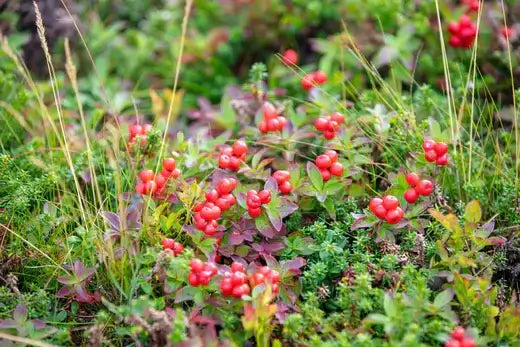Squaw Vine: Exploring Health Benefits and Possible Side Effects
This creeping perennial plant is native to North America and has been used for centuries by Indigenous peoples for its purported medicinal properties. While Squaw Vine's potential benefits are intriguing, it's essential to explore its positive aspects and possible side effects to make informed decisions about its usage.
Health Benefits of Squaw Vine:
- 1. Reproductive Health: Squaw Vine herb has been traditionally associated with women's health and reproductive wellness. It often supports menstrual discomfort, alleviates cramps, and regulates irregular menstrual cycles. Additionally, it has been used during pregnancy to strengthen uterine muscles and prepare the body for childbirth. However, pregnant women should turn to a healthcare professional above using any herbal remedy.
- 2. Urinary Tract Health: It may reduce water retention and assist in flushing out toxins from the body, thus promoting overall urinary system health.
- 3. Labor and Childbirth: In traditional medicine, Squaw Vine has been used to stimulate contractions during labor and ease the process of childbirth. It is believed to help strengthen uterine contractions while promoting a smoother labor experience. Nevertheless, the use of Squaw Vine herb during pregnancy and labor should be approached with caution and under medical supervision due to potential risks.
- 4. Postpartum Recovery: Squaw Vine's benefits extend to the postpartum period as well. It is thought to aid in postpartum recovery by toning and supporting the reproductive organs, promoting healing, and restoring balance to the body after childbirth.
- 5. Mild Sedative Effects: Some proponents suggest that Squaw Vine might have mild sedative effects, which could potentially help reduce anxiety and stress. However, more research is needed to validate these claims.
Possible Side Effects and Precautions:
- 1. Pregnancy and Breastfeeding: Although Squaw Vine has historically been used to support pregnancy and childbirth, there are concerns about its safety during pregnancy and breastfeeding. Some compounds in Squaw Vine might stimulate uterine contractions, potentially leading to premature labor or miscarriage. Pregnant and breastfeeding individuals should avoid using Squaw Vine without consulting a healthcare professional.
- 2. Allergic Reactions: As with any herbal remedy, allergic reactions are possible. Individuals with a history of allergies to plants in the Rubiaceae family, to which Squaw Vine belongs, should exercise caution and avoid its use.
- 3. Gastrointestinal Discomfort: In some cases, the use of Squaw Vine might lead to gastrointestinal discomfort, including nausea, vomiting, or diarrhea. If these symptoms occur, discontinuing the use of Squaw Vine is recommended.
- 4. Drug Interactions: Squaw Vine could potentially interact with certain medications. Individuals taking medications, especially those that affect the hormonal system, should consult a healthcare provider before using Squaw Vine to prevent potential interactions. Dosage and Forms: Squaw Vine is available in various forms, including teas, tinctures, capsules, and extracts. Dosage guidelines may vary based on the specific condition and the manufacturer's recommendations. It's advisable to start with a low dose and gradually increase, if needed, on the guidance of a healthcare professional.
Conclusion:
Squaw Vine, with its historical use and potential health benefits, has piqued the interest of many individuals seeking natural remedies for women's health and reproductive issues. While its traditional services are promising, more research is needed to fully understand its mechanisms of action, efficacy, and safety profile. In the realm of herbal medicine, knowledge evolves. What was once a traditional remedy might find its place in modern healthcare with further research and understanding. Until then, informed and cautious usage remains the key when exploring the potential benefits of Squaw Vine.

